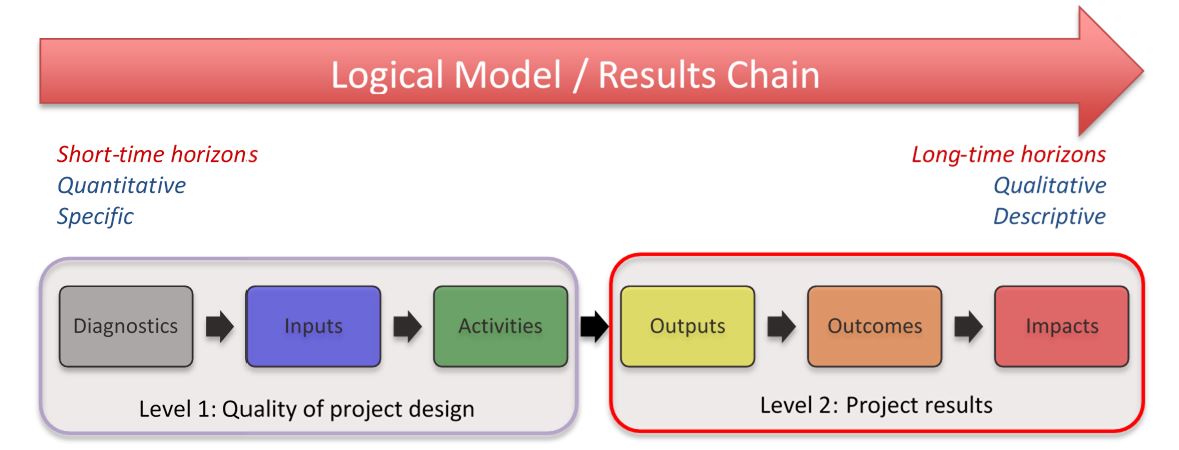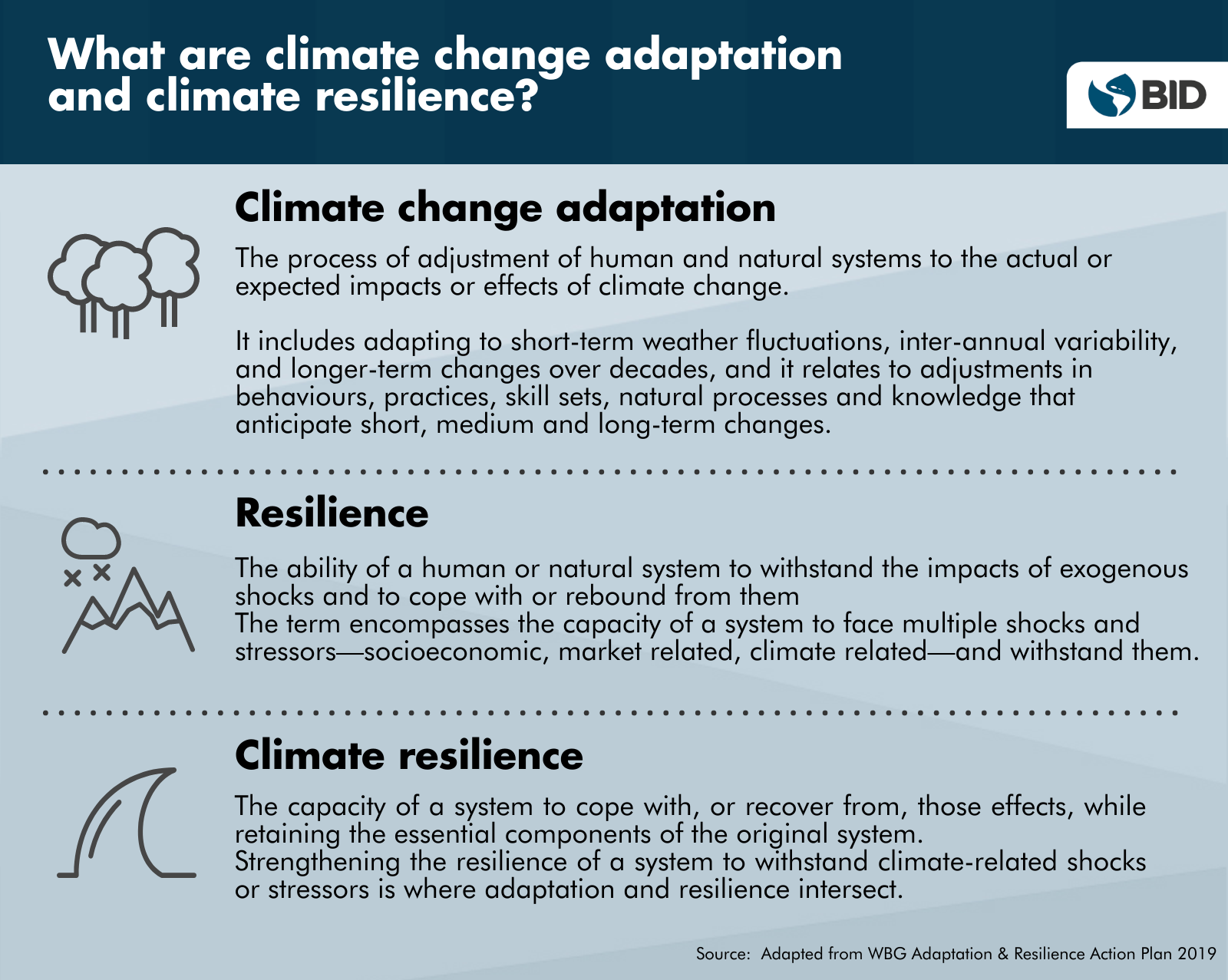Climate change poses significant risks to development in Latin America and the Caribbean. As Hurricane Dorian’s devastating path through The Bahamas demonstrated recently, our region is extremely vulnerable to the worsening impacts of climate change.
For the region, climate adaptation can limit the negative impacts and is fundamental for effectively achieving sustainable development and equity, including poverty reduction and economic growth.
Over the past decade, the Multilateral Development Banks (MDBs) and International Development Finance Club (IDFC) members have successfully scaled up their adaptation finance commitments. From 2011 to 2018, MDBs delivered USD 52.4 billion on climate finance while IDFC members delivered USD 30.5 billion from 2015 – 2018.
At COP24 in December 2018, the IDB Group and other MDBs launched the Paris Alignment Approach (PAA) to guide the process of aligning their operations with the objectives of the Paris Agreement.
As adaptation finance flows increase, there is more demand for information about their contribution towards climate resilience goals, and MDBs and IDFC members require a common framework and principles for climate resilience metrics for monitoring, evaluating, comparing and reporting on the contribution of their adaptation financing activities towards climate resilient goals.
This calls for the development of climate resilience metrics that are key to assess the extent to which adaptation financing activities contribute to climate resilience to scale up and align financing flows with the goals of the Paris Agreement.
Principles for climate resilience metrics
Although it is not feasible to develop a universal and interchangeable list of climate resilience indicators that could be used across all financing operations, a recent paper by the MDBs, sets out principles and a high-level framework for climate resilience metrics in financing operations. This could be the starting point to harmonize general concepts among institutional organizations about what a climate resilience metric is and what should be its main characteristics.
Climate resilience metrics require a context-specific approach that is essential for determining the project-level context of climate vulnerability and appropriate climate resilience priorities.
2. Climate resilience metrics must be compatible with variable and often long timescales over which intended project results may be delivered and reported.
3. Climate resilience metrics must be able to cope with the inherent uncertainties associated with future climate conditions. They need to take into account the uncertainties and implications for project performance, that result from longer timescales for project implementation and the assessment of project results.
4. Climate resilience metrics must be able to cope with challenges associated with determining the boundaries of climate resilience projects. Potential impacts and opportunities may often lie outside the physical boundaries of the project, e.g. impacts on supply chains, or on downstream communities.
These metrics shall be applicable to different life cycle stages of the project and if needed, over its entire lifespan which may be in the range of decades; and shall aim to be useful for as many stakeholders as possible involved in the project.
Climate Resilience metrics framework
A climate resilience metrics framework enables projects to be assessed in terms of the quality of their design, in terms of their actual or expected project results, or both. Quality of project design encompasses diagnostics, inputs and activities, whereas project results encompass outputs, outcomes and impacts.
This flexible framework can accommodate a broad and diverse range of potential climate resilience activities and operations and may be applied differentially by different financial institutions as it provides a common language.

Next steps for climate resilience metrics
These metrics can serve as a way of documenting more systematically climate resilience efforts and identify successful examples. In doing so, they can help also identify opportunities for further climate resilience support.
Many of the MDBs have started pilots with climate resilience metrics. For example, the Asian Development Bank implemented the Coastal Towns Environmental Infrastructure Project of Bangladesh using a sector lending modality to support investments in a phased manner. For this project, climate resilience output metrics were developed at the asset level. Further, by introducing a performance-based allocation approach, the project was able to support not only resilient infrastructure but also risk-sensitive governance processes that were crucial for the longer-term sustainability of the infrastructure assets.
Another pilot is the water infrastructure project in a Central Asian country implemented by the European Bank for Reconstruction and Development to address the worsening water stress due to climate change. The project, which applied the climate resilience metrics approach, was designed to reduce water losses and is estimated to deliver annual water savings of 2,887,515 meters cubed per year compared to the pre-project baseline (physical outcome). Using a shadow water price that reflects the full economic value of the water saved, the savings can also be expressed as a climate resilience benefit of €1.44 million per year.
In line with these efforts, the IDB is also prioritizing the consideration of climate resilience in its development operations. During the 2016 governors’ annual meeting in The Bahamas, the IDB’s Board of Governors welcomed Management’s objective to improve the assessment of climate risks and to identify opportunities for resilience and adaptation measures at the project concept stage.
In line with this and the IDB’s Sustainable Infrastructure Strategy, the IDB developed a methodology to facilitate the identification and assessment of disaster and climate change risks and resilience opportunities in all relevant projects during their identification, preparation and implementation phases. In addition, the bank is piloting a climate resilience metrics framework, stemming from the joint MDBs-IDFC common framework that should guide project teams in developing specific climate resilience indicators at the project level using a climate resilience characterization approach through three different capacities (e.g. restorative, absorptive and transformative capacities).
MDBs and IDFC members will continue to develop their own specific climate resilience metrics systems using the common language set out in this framework as they develop and implement their respective and joint approaches to aligning their operations with the Paris Agreement goals. This new high-level framework for climate resilience metrics is a key step in that direction.

Photo copyright: BID Ciudades Sostenibles


Leave a Reply